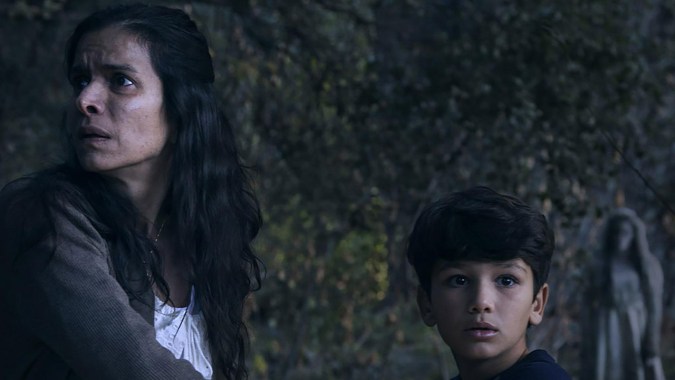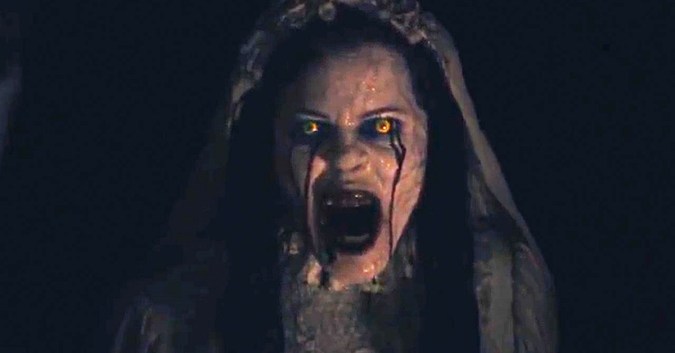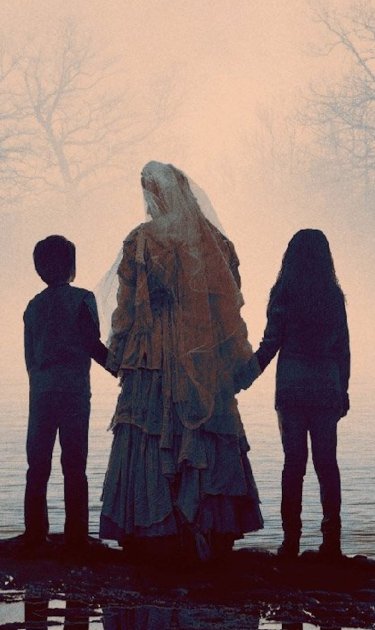A thin layer of smoke hovered around the entrance of the Paramount Theater in Austin, Texas, as moviegoers entered the venue to see the world premiere of The Curse of La Llorona at the South by Southwest (SXSW) Film Festival last month.
A group of curanderas (traditional healers) of all ages stood outside the theater burning small bundles of sage – an ancient ritual in many cultures – to cleanse the individuals there to watch the horror film, which is based on an old Mexican folktale. Along with healing capabilities, some consider the burning of sage as a way to fend off evil spirits.
But evil spirits at a film festival screening? The title character in La Llorona is said to be the ghost of a woman who drowned her children generations ago and now cries out as she searches for them, so maybe there is actually something tangible to protecting attendees with the burning herb. Maybe there is something to the red handkerchief that theater employees handed out to moviegoers – which a curandero who took to the Paramount stage prior to the screening explained is used to wipe clean any bad entities that might attempt to attach themselves to patrons as they watch La Llorona.
“Before you leave tonight, throw your handkerchief away in the trash,” the curandero told the audience. “Don’t take it home with you.”

La Llorona has faced some controversy in the lead up to its theatrical release on April 19. Some have criticized the decision to use real-life curanderos to market the movie – questioning the optics of using traditional healers whose practices are rooted in spirituality and indigenous culture as a promotional tool to sell a horror movie.
Then, there’s the fact that the lead character in the film is played by white actress Linda Cardellini (Green Book). In a movie adapted from a Latin American legend, why is the movie’s leading lady not Latina herself? Filmmakers explained to Remezcla at SXSW that they wanted the main character to be an “outsider” to the supernatural events taking place in the film – someone who doesn’t know the story of La Llorona, so that she can uncover it with less knowledge. Filmmakers argue that if the lead character had been Latina, it she would have likely already heard the stories growing up, thus undercutting the discovery plot.
That was the experience of Latino actors Patricia Velasquez (The L Word) and Raymond Cruz (Major Crimes). Both grew up convinced the Llorona legend was true, especially since it was a story told to them by trusted relatives.
“Everyone who is Latin knows about La Llorona,” Cruz told Remezcla during an interview at SXSW. “She’s our boogieman. She’s our Frankenstein. We’ve known about her since we were children. You heard about it from your grandfather and they heard about it when they were children, too.”
In La Llorona, which has been incorporated into “The Conjuring Universe” by producer James Wan, Velasquez plays Patricia Alvarez, a mother doing everything she can to protect her two young sons from the malevolent entity trying to hurt them. Cruz plays Rafael Olvera, a curandero who is called upon by another mother (Linda Cardellini) in the same predicament as Patricia. She, too, is trying to save her two children from being the next victims of La Llorona, and she believes Rafael is the only person who can help.
Raised in a large family in Mexico and Venezuela, Velasquez remembers her older brothers scaring her and her younger siblings with threats that La Llorona was going to make an unwanted appearance if they misbehaved.
“They would say, ‘Eat your food or La Llorona is going to come get you,’” Velasquez told Remezcla at SXSW. “It was the way they made kids stay inside. We would be playing outside and when it got dark, they would say, ‘You have to come inside now or La Llorona is going to come get you.’ We very much believed in her.”
Now with her own young daughter, Velasquez is torn between keeping her Latino traditions alive or telling her child a story that could give her nightmares.
“I do want her to know about [La Llorona],” Velasquez said. “I do want to pass the story to her because it’s so important to us…as a cultural thing, but at the same time, do we want to scare them so much? I haven’t used the tactic on [my daughter] because I’ve been so scared my whole life of La Llorona.”

But which La Llorona folktale to choose? Across the Latin American diaspora, there are a number of different variations on the story. In some narratives, the woman drowns her children because her husband is leaving her for a younger woman and she wants to hurt him. In another version, La Llorona takes her revenge out on unfaithful men. Then, there are those La Llorona stories that connect the folktale to the Spanish conquistadors.
“There are so many different versions of La Llorona and not only in the Hispanic culture, but all around the world,” Velasquez said. “The one in the film seems to be the most universal one and the one that most people connect to.”
Whichever version someone believes to be the most authentic, Velasquez said there is a reason the story has stood the test of time. To her, La Llorona’s meaning runs much deeper than a standard campfire story.
“I think she’s stayed alive all these generations later because of what she represents,” Velasquez said. “To me, she represents how far someone will go in a moment of rage. She represents the destruction of the little kid inside us and trying to get back that innocence.”
For Velasquez, La Llorona is not just a story. She’s an omnipresent being that should be taken seriously.
“It’s amazing to think about the repercussions of this entity that has spanned generations,” Velasquez said. “She has always been so present among us. I’m glad they chose to honor her in [the film] and respect what she means to the Latino community. There’s an energy to [La Llorona] where you know you’re playing with fire. We had a responsibility to do good by her.”




